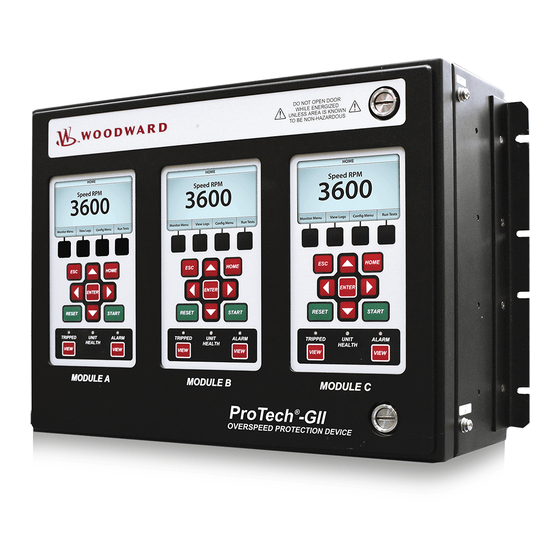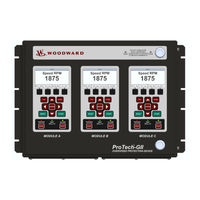
Woodward ProTech-GII Manuals
Manuals and User Guides for Woodward ProTech-GII. We have 2 Woodward ProTech-GII manuals available for free PDF download: Product Manual, Installation And Operation Manual
Woodward ProTech-GII Product Manual (195 pages)
with Math Enhancements
Brand: Woodward
|
Category: Protection Device
|
Size: 6 MB
Table of Contents
-
-
Description16
-
Applications17
-
What's New19
-
-
Introduction21
-
Unpacking21
-
Enclosures22
-
-
-
Introduction52
-
Features52
-
Start Logic66
-
System Logs72
-
-
-
Introduction76
-
Navigation79
-
Passwords80
-
Monitor Menu81
-
View Logs93
-
-
-
Introduction96
-
-
-
Test Modes Menu115
-
Lamp Test124
-
-
-
General125
-
Using the PCT127
-
-
-
Introduction144
-
Error Messages157
-
-
-
Introduction158
-
Monitor Only158
-
Modbus Interface159
-
Port Adjustments159
-
-
-
Safe State165
-
Limitations166
-
Restrictions167
-
-
Introduction169
-
-
-
Introduction181
-
Lantronix Setup185
-
-
Revision History
193
Advertisement
Woodward ProTech-GII Installation And Operation Manual (158 pages)
Overspeed Protection Device
Brand: Woodward
|
Category: Controller
|
Size: 3 MB
Table of Contents
-
-
Introduction16
-
Unpacking16
-
Enclosures17
-
-
-
Features43
-
Start Logic56
-
System Logs62
-
-
-
Safe State79
-
Limitations81
-
Restrictions81
-
-
Introduction85
-
Navigation88
-
Passwords89
-
Monitor Menu90
-
View Logs98
-
Configure Menu101
-
Test Modes Menu111
-
-
-
General118
-
On-Line Menu122
-

